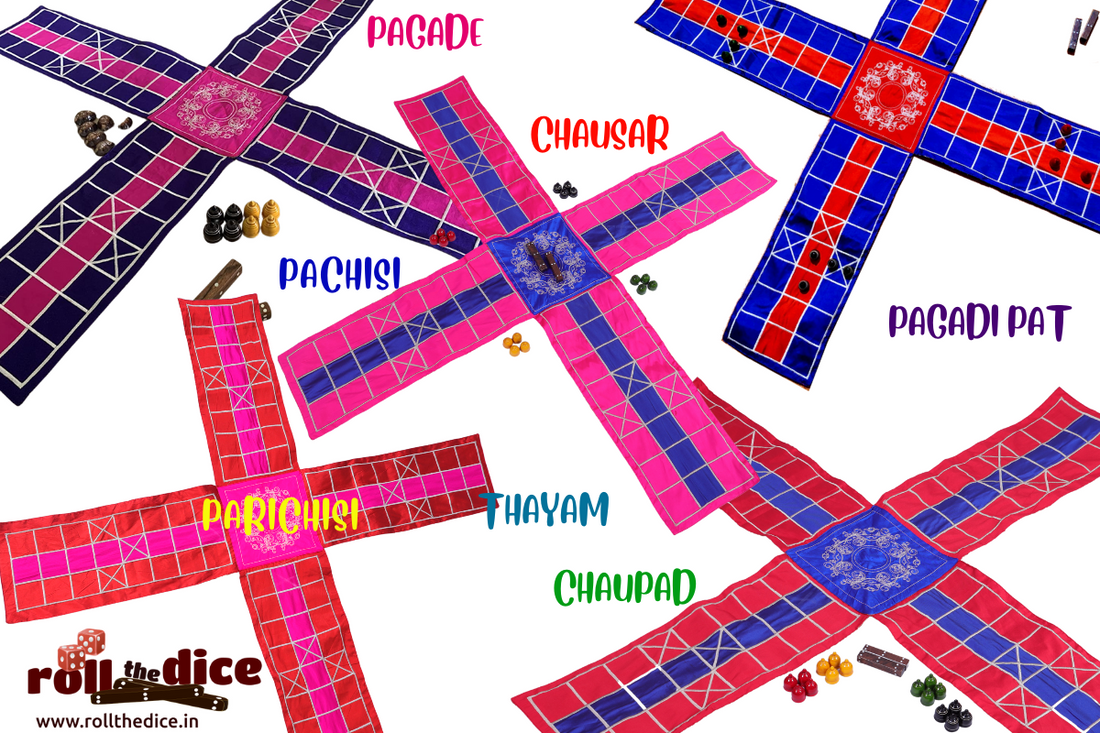
Rolling into Fun: A Beginner's Guide to Pagade - The Exciting Game of Dice!
Share
Today, I will guide you through the fundamentals of playing #Pagade, the game that served as the inspiration to modern-day #Ludo.
Pagade is a classic board game that has been enjoyed by generations of people in India. This game has its roots in ancient India, and it has been referenced in many Hindu texts and Puranas, including the Mahabharata. Pagade is believed to have served as the inspiration for the modern-day game of Ludo. It is a popular game in India during festivals and other celebrations, and it has also been played in royal courts and among nobility.
The Dhyut - game of dice, referenced in the Mahabharata has various names in different regions/states across India. Here are some of them:
| Chaupar/Chaupad - Uttar Pradesh, Bihar, Madhya Pradesh, Rajasthan |
| Chausar/Chausara - Jharkhand, West Bengal, Odisha |
| Pachisi/Parcheesi - Punjab, Haryana, Delhi, Himachal Pradesh |
| Dayakattai - Tamil Nadu |
| Pagade - Karnataka, Andhra Pradesh, Telangana |
| Pagadi Path - Maharashtra |
| Pagade Patta - Hubli, Belagavi, Maharashtra |
| Chopat/Chopar - Gujarat |
| Indian cross & circle board game - Modern day convention of referring pagade |
Although different regions of India have their own variations of the game, most these games routes to Game of Dice comes in MahaBharatha. They vary in terms of types of dice used (either cowrie shells or long dices), counting of dice throws and type of games played with a single game set. India is truly a country of rich diversity and knowledge.
Pagade is a game of luck and strategy. It is a cross-and-circle game that is played on a square board with 4 arms, which are divided into a series of squares. Each arm has three rows of eight squares, and the board is traditionally made from cloth.
The game is typically played with two-three- four players, each of them gets 4 pawns of a color and controls movement of pieces.
The objective of the game is to move all four pieces from the starting point to the home square, located at the end of each arm. Note: The starting point varies for each game in pagade, eg: For standard game it starts from 6,7 and 12th position. For few games, the movement of pawns starts from center square .i.e home place. Like this we have various starting points based on game type. The game is played by rolling cowrie shells or dice, and players must navigate around the board while trying to capture their opponents' pieces.
Today, Pagade continues to be played in India and is also enjoyed by people in other parts of the world. It is considered to be an important part of India's cultural heritage and is a symbol of the country's rich history and traditions.
If you are interested in learning more about Pagade and its variations, you can check out the manual section of www.rollthedice.in to learn about the popular versions played across India.
